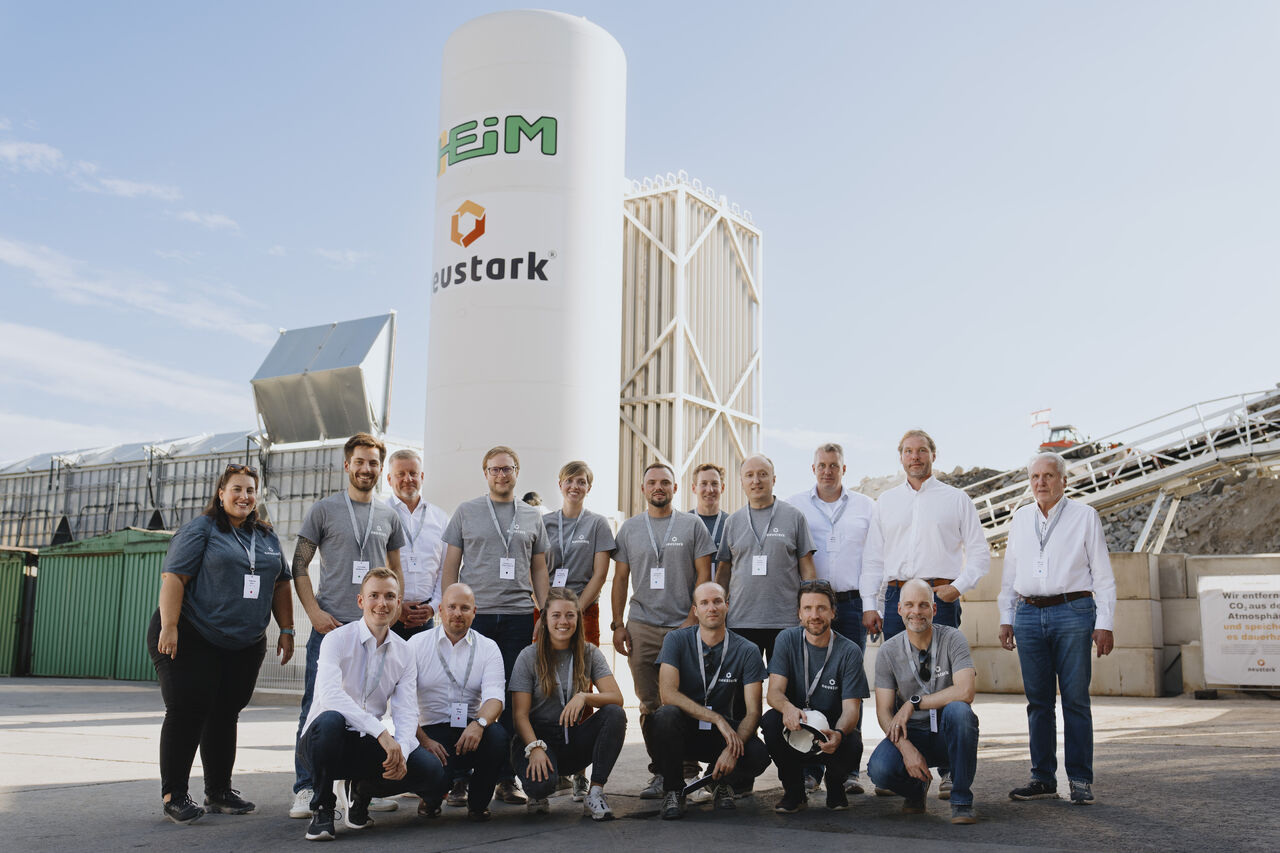
Neustark, a spin-off from Switzerland’s ETH Zurich university, has inaugurated its first commercial-scale carbon capture plant in the EU, located at a construction waste recycling facility on the outskirts of Berlin.
The plant, built in partnership with building and recycling company Heim, has the capacity to permanently store over 1,000 tons of CO₂ per year by injecting the gas into granules of demolition concrete.
The CO₂, which is captured at nearby biogas plants and would otherwise have entered the atmosphere, binds with the concrete through a process called mineralisation. This chemical reaction turns the CO₂ into limestone, binding it to the concrete, and locking it away for thousands if not millions of years. This concrete is then reused to build new infrastructure.
With over a billion tonnes produced each year, demolition concrete is the world’s single largest waste stream. Neustark wants to turn this waste into a carbon sink. The startup also sells carbon removal credits to companies like Microsoft and UBS to help them offset their emissions.
“Carbon removal is – next to massive emission reductions – indispensable to reach our net-zero targets, as the IPCC [Intergovernmental Panel on Climate Change] states,” said Johannes Tiefenthaler, co-founder and co-CEO of Neustark.

Tiefenthaler, who co-launched the startup alongside Valentin Gutknecht in 2019, sees the opening of the plant in Berlin as a huge step, not just for them, but also for the CO₂ removal industry as a whole.
The International Energy Agency deems carbon capture and storage as essential if we are to meet the generally accepted target of net-zero emissions by 2050. While progress on new carbon capture facilities has been slow, due to technical and cost hurdles, things are looking up — investment and the opening of new plants are at all-time highs.
Neustark recently secured an undisclosed investment from building materials giant Holcim, which wants to install the technology at its cement-making facilities. This will no doubt accelerate Neustark’s ambitious goal to remove 1 million tons of CO₂ from the atmosphere by 2030.







